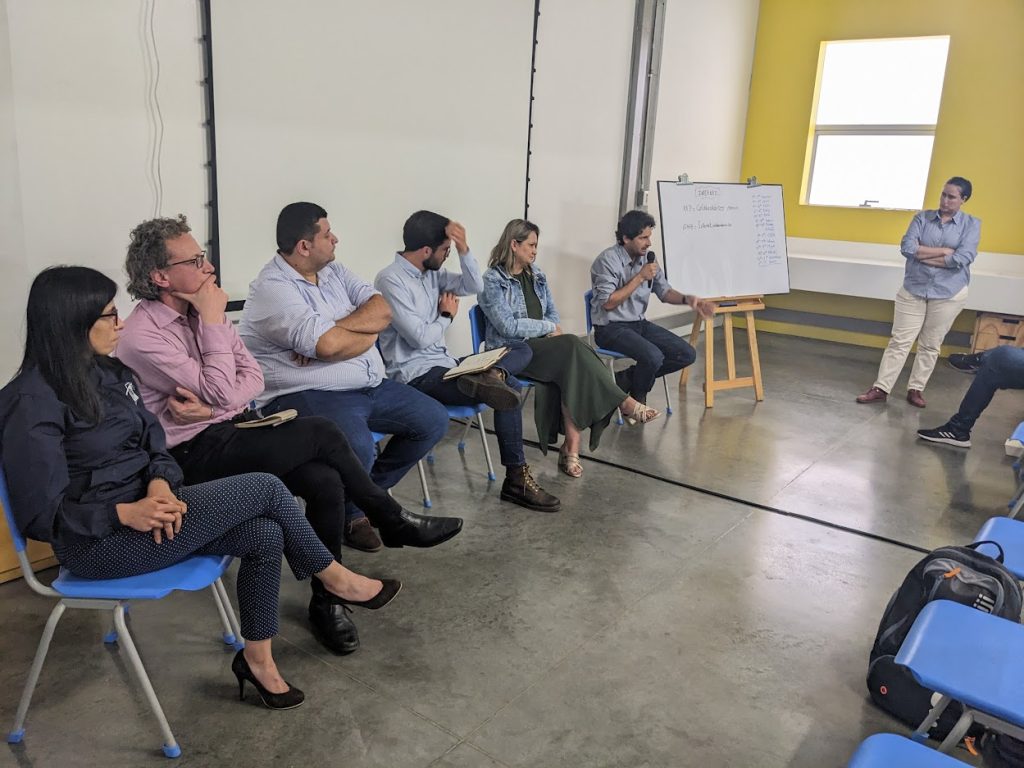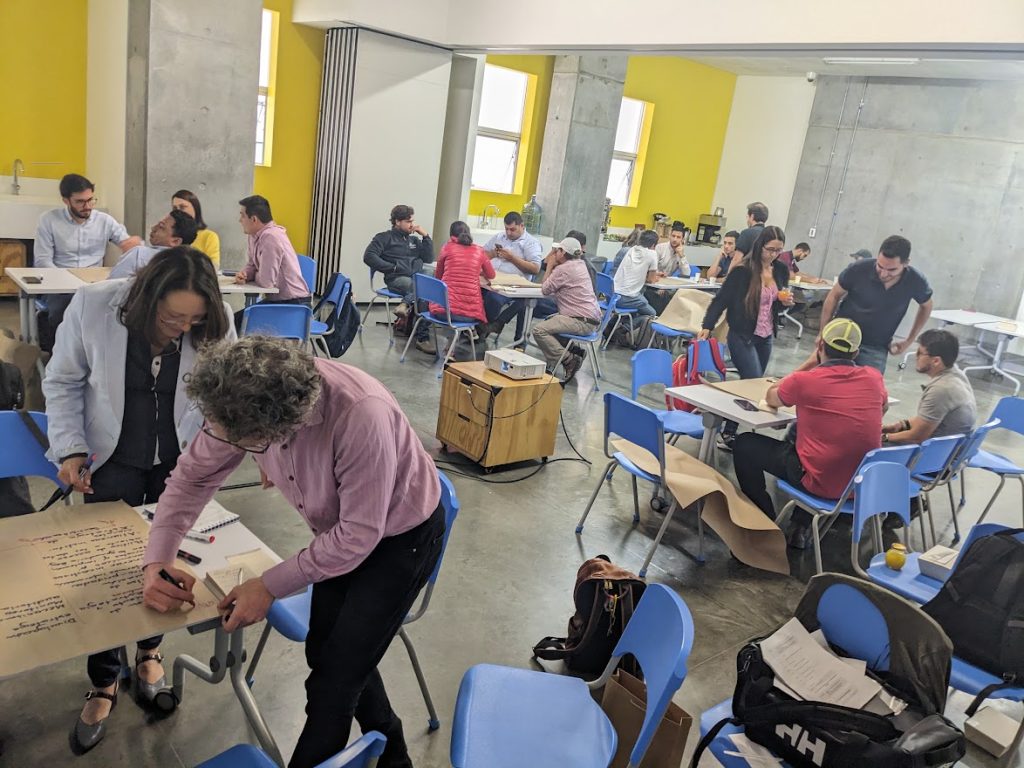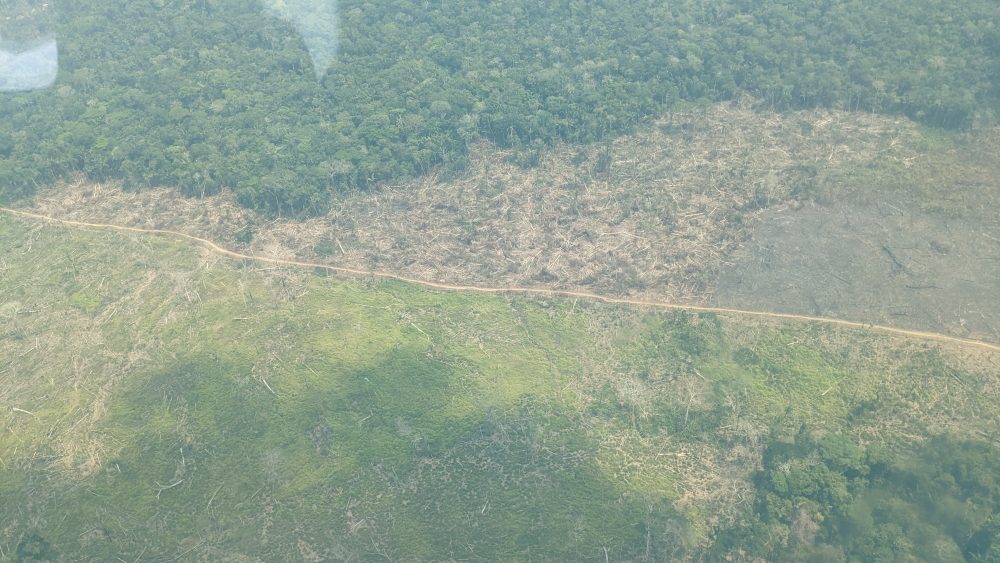Posted on 2 March 2023 by Jesica López (PhD student, Centre for Environmental and Climate Science and the Agenda 2030 Graduate School)
The views expressed in this publication are those of the author and do not necessarily represent those of the Agenda 2030 Graduate School or Lund University. The present document is being issued without formal editing.
The Colombian Amazon lost more than 520 km2 of forest in the first half of 2022.
An exponential growth in cattle herds, has led to the expansion of grassland to enlarge the animals, with significant consequences. The fragmentation of large and continuous areas of tropical forests and savannahs in the Colombian Amazon represents an important threat for the conservation of biodiversity and vital ecosystems services[1]. The agricultural livestock sector needs to look for opportunities to alleviate and reduce deforestation rates in the second most biodiverse country in the world[2].
The principal causes of fragmentation according to the National Environment Ministry include i) expansion of grasslands for land acquisition, ii) bad practices of cattle ranching, iii) not-planned transport infrastructure, iv) crops for illicit use, v) illicit extraction of minerals, vi) illegal logging and vii) the expansion of agricultural borders in not allowed areas[3]. Cattle ranching is the main driver of deforestation and degradation in the Colombian Amazon.
Food systems are a major contributor to biodiversity loss
According to the global scientific consensus, the production of animal-sourced foods must be reduced by at least half globally if we are to achieve all 17 Sustainable Development Goals (SDGs) by 2030 and meet the Paris Agreement climate targets. With food systems now responsible for up to 80% of biodiversity loss[4], particularly due to the impact of industrial animal agriculture practices and generating one-third of all greenhouse gas emissions, the UN Food Systems Summit (2021) clearly showed that international recognition is being given to the topic.
This is to highlight that food systems concern the way our food is produced, processed, transported, traded, distributed, consumed and disposed of. As well as the livelihoods of all the people working in the sector, plus key actors, policies, and investments to satisfy the demands of global consumers. The warning on unsustainable food systems was raised in a 2019 joint report “Food Systems at Risk” by the European Union (EU), the Food and Agricultural Organization (FAO) and the French Agricultural Research Centre for International Development (CIRAD)[5]. Then in 2021 a set of principles and action tracks, resulted from the UN Food Systems Summit, with the creation of the Sustainable Livestock Solutions Cluster (SLSC). The objective of the SLSC is to seek support for creation of a broad-based multi-stakeholder coalition to develop, model and implement cohesive and integrated measures that promote consumption and production of affordable, healthy diets within safe planetary boundaries from humane and regenerative farming methods globally[6]. The five actions of the SLSC include, 1) ensure access to safe and nutritious food for all; 2) shift to sustainable and healthy consumption patterns; 3) boost nature-positive production; 4) advance equitable livelihoods, and 5) build resilience to vulnerabilities, shocks and stress.
Inspired by the track actions, in December 2022, an exchange of ideas with a group of expertise and participants took place in Colombia to discuss the challenges and opportunities of conventional cattle ranching practices to be transformed towards regenerative principles and sustainability approaches in the long term. The new political situation of the elected Colombian government has been emphatic on the need to build, over the next four years (2022-2026), an economic model for progress that conserves nature and recognizes that biodiversity is the basis of the main drivers of economic and social development in the country and were massive social and economic efforts are required to shift policy thinking.



Part of my research seeks the how to move forward from the conventional livestock and who is essential to work together to identify and deliver deforestation- and conversion-free livestock supply chains as part of a new model of agricultural production that optimizes food production, enhances rural livelihoods, and protects and restores the natural environment. The workshop’s aim was to catalyse collaborative efforts and interregional dialogue for innovation in the livestock sector, with the objective to engage stakeholder perspectives towards integrative solutions and identify key components for transitioning from extensive livestock activities towards a regenerative approach, to explore plausible and future emerging bioeconomy opportunities.
The debates concluded that livestock is one of the agricultural activities with the highest importance in Colombia, as it is estimated that in 2018 the sector contributed with 48.7% of the national GDP and generated close to 810,000 direct jobs[7]. In terms of land use, cattle grazing is widely spread in the country (34 million ha) and is considered one of the main engines of the expansion of the agricultural frontier[8], [9], [10]. By 2020, the Colombian cattle herd reached a total of around 28 million cow heads[11], were most importantly, between the 2016-2022 period, the cattle herd of the Colombian Amazon region grew from 1 143 346 (million cows) to 2 245 534 (million cows), a twofold increase, in the agricultural edge surrounding the Serranía de Chiribiquete National Park (the largest national park in Colombia)[12].
Regenerative Agriculture
During the workshop main discussions mixed different concepts of landscape ecology, regenerative cattle, sustainable cattle, conservation cattle practices, zero-deforestation, and conservation/production agreements. All in all, the discussions and debates attempted to find pathways towards the “nature-positive production” action track that the SLSC proposed in 2019. Some of the questions raised by the experts and participants were: what is the “most” nature-positive production technique?, what is that we call regenerative?, what do we understand as sustainable cattle?
No single bullet point solutions could answer that, but there was a central character in the room: Regenerative Agriculture (RA). The word “regenerative” comes from the Latin verb regenerāre, meaning “to bring forth again.” The prefix re- means “again” and generate means “capable of producing or creating”.
The approach has been proposed as an alternative means of producing food that may have lower—or even net positive—environmental and/or social impacts[13]. According to researchers, RA is imperative for addressing the persistent challenge of food insecurity[14], were poverty, war and conflict, and natural disasters are factors expected to worsen with climate change[15], [16]. In practice RA is all about keeping productive herds whit healthy grass feed cows in specific rotational cycles. By doing so, the experts say, the combination provides the soil with the time and the inputs needed to renovate itself. There were in Colombia by 2016, 60 farms identified to be using the regenerative principles in their cattle practices and that number has increased doubled in 2022, with 120 farms across the country.
So, in conclusion and according to a RA expert, we cannot talk about regenerative cattle if it is used as an excuse to depredate the ecosystems of the Colombian Amazon region, instead we can possibly talk of regenerative livestock when seen as a practice possible to improve and try to restore some economic, social and ecological services damaged with conventional livestock.
[1] Clerici, N. 2022. Taller sobre el entendiendo de la dinámica de la deforestación en diferentes regiones de Colombia. December 12-13, Medellín, Colombia.
[2] A look at the natural world of Colombia (2017). Retrieved from: https://www.worldwildlife.org/magazine/issues/winter-2017/articles/a-look-at-the-natural-world-of-colombia#:~:text=Colombia%20is%20the%20second%20most,anywhere%20else%20in%20the%20world. [Online Resource]
[3] Ministerio de Medio Ambiente y Desarrollo Sostenible & Instituto de Hidrología, meteorología y estudios Ambientales (IDEAM) (2020). Resultados del monitoreo deforestación: Primer trimestre 2021. Retrieved from: https://imgs.mongabay.com/wp-content/uploads/sites/25/2022/07/25232523/Cifra_Actualizacion_Deforestacion2021.pdf
[4] Hannah R., Spooner, F. and Roser, M. (2022) – “Biodiversity”. Published online at OurWorldInData.org. Retrieved from: ‘https://ourworldindata.org/biodiversity’ [Online Resource]
[5] Dury, S., Bendjebbar, P., Hainzelin, E., Giordano, T. and Bricas, N., eds. (2019). Food Systems at risk: new trends and challenges. Rome, Montpellier, Brussels, FAO, CIRAD and European Commission. https://www.fao.org/publications/card/en/c/CA5724EN/
[6] Sustainable Livestock Solutions Cluster: Stakeholder Group C (2019). Retrieved from: ‘https://foodsystems.community/wp-content/uploads/2021/09/Sustainable-Livestock-Solutions-Cluster-Group-C-Solutions-10-pag-2849671f1f2bfaea5478477a9d3079d3.pdf’ [Online Resource]
[7] Federación Nacional de Ganaderos de Colombia (FEDEGAN). (2018). Ganadería colombiana: Hoja de ruta 2018-2022. Bogotá, D.C., Colombia: Federación Colombiana de Ganaderos (FEDEGAN). Recuperado de http://static.fedegan.org.co.s3.amazonaws.com/publicaciones/Hoja_de_ruta_Fedegan.pdf
[8]DANE-ENA. (2017). Encuesta Nacional Agropecuaria (ENA) [Base de datos]. Retrieved from: https://www.dane.gov.co/index.php/estadisticas-por-tema/agropecuario/encuesta-nacional-agropecuaria-ena
[9] Unidad de Planificación Rural Agropecuaria (UPRA). (2014). Presentación institucional. Unidad de Planificación Rural Agropecuario (UPRA). Retrieved from: https://www.minagricultura.gov.co/Documents/UPRA_Oferta_Institucional.pdf
[10]Zuluaga, A., y Etter, A. (2018). Áreas aptas para la actividad ganadera en Colombia. Análisis espacial de los impactos ambientales y niveles de productividad de la ganadería. En L. A. Moreno, C. Rueda, y G. Andrade (Eds.), Biodiversidad 2017. Estado y tendencias de la biodiversidad continental de Colombia. Instituto de Investigación de Recursos Biológicos Alexander von Humboldt.
[11] Instituto Colombiano Agropecuario (ICA). (2020). Colombia recupera su estatus sanitario como país libre de fiebre aftosa con vacunación. Retrieved from: https://www.ica.gov. co/noticias/colombia-recupera-estatus-pais-libre-aftosa#:~:text=ICA%2C%20Instituto%20Colombiano%20Agropecuarioytext=A%20partir%20 del%205%20de,22%20de%20mayo%20de%202017
[12] Botero, R. 2022. Webinar: Combating loss of connectivity in the arc of deforestation in Colombia. A visit to non-sustainable cattle ranching. October 6th of 2022. Lund University. Arranged by Jesica López.
[13]Peter, N., Nicole, C., Frankel-Goldwater, L, Bartel K., and Colleen, J. (2020). What Is Regenerative Agriculture? A Review of Scholar and Practitioner Definitions Based on Processes and Outcomes. Frontiers in Sustainable Food Systems, 4. https://doi.org/10.3389/fsufs.2020.577723
[14] Schulte, L.A., Dale, B.E., Bozzetto, S. et al. (2022). Meeting global challenges with regenerative agriculture producing food and energy. Nat Sustain 5, 384–388. https://doi-org.ludwig.lub.lu.se/10.1038/s41893-021-00827-y
[15] Pawlak, K. & Kołodziejczak, M. (2020). The role of agriculture in ensuring food security in developing countries: considerations in the context of the problem of sustainable food production. Sustainability 12, 5488. https://doi.org/10.3390/su12135488
[16] IPCC Climate Change 2014: Impacts, Adaptation, and Vulnerability (eds Field, C. B. et al.) (Cambridge Univ. Press, 2014).

